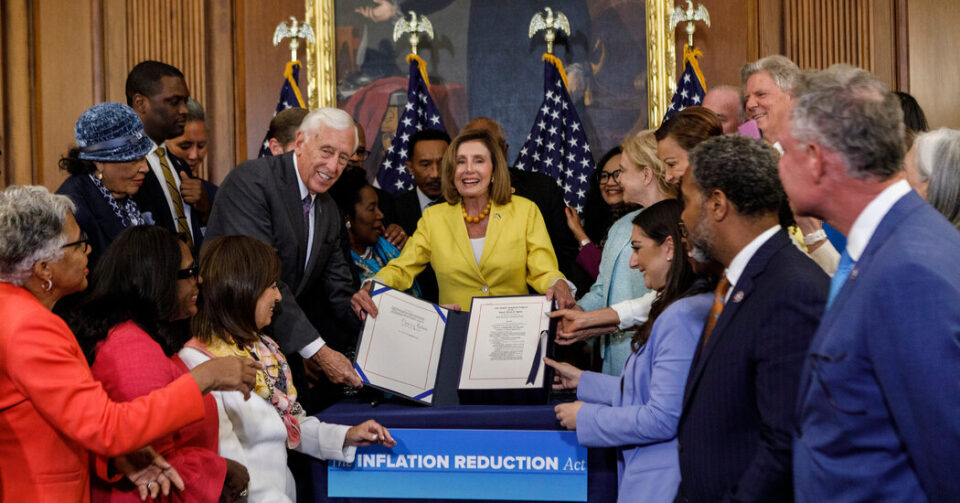
But Democrats hope to capitalize on the win, emphasizing that they have delivered on long-held promises, even though it could take years to see the benefits from some of the longer-term proposals.
What’s in the Inflation Reduction Act
What’s in the Inflation Reduction Act
A substantive legislation. The $370 billion climate, tax and health care package that Congress approved on Aug. 12 could have far-reaching effects on the environment and the economy. Here are some of the key provisions:
“They’re seeing Democrats as the party that’s actually getting this stuff done and everyone else is trying to start a culture war or attacking the F.B.I.,” said Representative Tim Ryan, an Ohio Democrat who is running for the Senate. “The contrast in the last few months is becoming very stark.”
Approval of the legislation capped an arduous stretch of negotiations for Democrats. With Republicans unanimously opposed, Democrats focused on their own ranks and worked to find a compromise that would not only appease a left flank eager to pass an expansive plan that would transform the nation’s social safety net, but that also would secure the votes of key centrist holdouts reluctant to endorse billions in new spending as inflation climbed.
Democrats used the fast-track budget reconciliation process to navigate the legislation through both chambers, allowing them to sidestep the filibuster — the same tactic they used last year with the $1.9 trillion pandemic aid package. Cut entirely out of the process, Republicans fumed that the climate and health bill would do little to address inflation and criticized it for raising taxes and federal spending. (Many economists agree the bill is likely to dampen inflation, though modestly and not immediately.)
How Times reporters cover politics. We rely on our journalists to be independent observers. So while Times staff members may vote, they are not allowed to endorse or campaign for candidates or political causes. This includes participating in marches or rallies in support of a movement or giving money to, or raising money for, any political candidate or election cause.
The bill falls far short of the $2.2 trillion Build Back Better Act, which Ms. Pelosi wrangled to passage in the House in November. That bill included far more substantial changes to the tax code, as well as billions of dollars to create a federal paid leave program, provide support for most families with children, and expand housing, home care and public education. The social spending plan’s fate was initially tied to passage of the $1 trillion bipartisan infrastructure law, and it teetered repeatedly on the brink of failure, as centrists in the Democratic Party demanded that the party whittle it down.
But the package stalled in the Senate a month later, when Senator Joe Manchin III of West Virginia, a centrist Democrat, rejected it as exorbitant and walked away from talks. Though negotiations between Mr. Manchin and Senator Chuck Schumer, Democrat of New York and the majority leader, resumed this spring, they faltered again last month, leaving Democrats to grapple with the prospect of enacting just a health care package.


